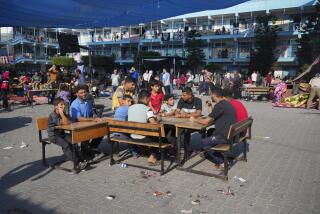Understanding the Holocaust
- Share via
The Holocaust needs to be understood not only as a statistical phenomenon, but also as a dramatic process taking place in a multidimensional context, suggests Walter Reich in his commentary, “Life Before Death: the Dimension of Time in the Kovno Ghetto” (Nov. 21).
Nothing closer to the truth, as I found out during a visit to the Simon Wiesenthal Center in Los Angeles, where I encountered, on the second floor of the building, a bunk bed from Buchenwald, the infamous Nazi camp where more than 100,000 prisoners died. Although it was simply a bed, I could not resist the temptation of touching the old and scratched wood, of softly following with my fingertips the shapes of the rigid artifact. I could not avoid, also, imagining nine bodies crowded in its three levels talking in the middle of the night, sharing their dreams, their hopes.
Numbers and axiomatic models help quantify and simplify complex phenomena, but they could never replace my moment of personal discovery and my reconstruction of the pain and the suffering of anonymous victims which, in the last instance, came from interacting with an artifact with so much history.
NESTOR FANTINI
Northridge
More to Read
Sign up for Essential California
The most important California stories and recommendations in your inbox every morning.
You may occasionally receive promotional content from the Los Angeles Times.










